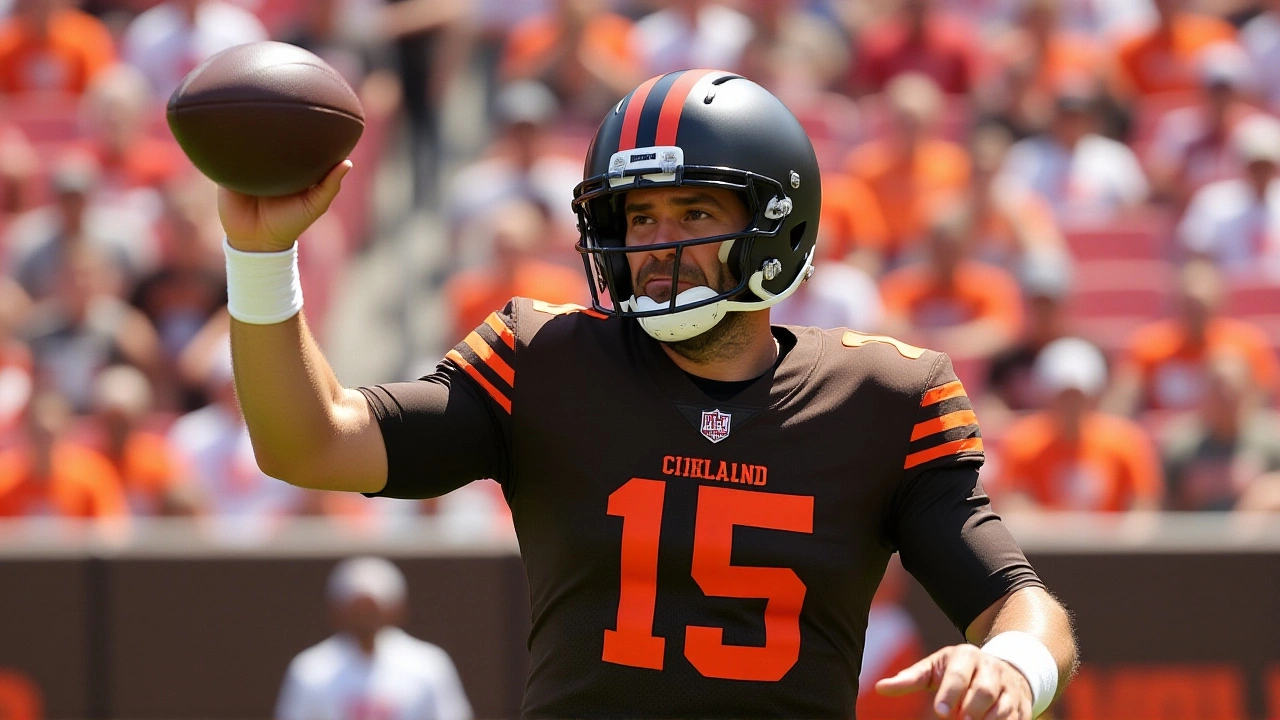When Joe Flacco, veteran quarterback of the Cleveland Browns was handed over to the Cincinnati Bengals on Tuesday, Oct. 7, 2025, the NFL’s AFC North saw its first intra‑division quarterback swap in 35 years. The trade—Cincinnati sending a 2026 fifth‑round pick while receiving Flacco and a 2026 sixth‑rounder—marks the first deal of any kind between the two rivals since the Browns returned to the league in 1999. It also comes as the Bengals scramble to fill the void left by injured franchise star Joe Burrow, whose turf‑toe injury has sidelined him for several weeks.
Background to the Trade
Burrow’s absence turned the Bengals’ offense into a revolving door. After a shaky Week 2 loss, Zac Taylor, the Bengals’ head coach, leaned on rookie Jake Browning as a placeholder. Browning’s three starts were disastrous—multiple interceptions, a bruised confidence, and a dwindling win‑probability metric that left the team three games under .500.
Meanwhile, the Browns had re‑signed Flacco in the offseason to mentor a crowded quarterback room featuring first‑year signalsmiths Dillon Gabriel and Shedeur Sanders. Flacco’s four‑game stint produced a paltry 58.1% completion rate, two touchdowns and six interceptions, prompting Cleveland’s coaching staff to bench him after a 1‑3 start.
Details of the Deal
The transaction is straightforward: Cincinnati parts with a 2026 fifth‑round pick, receives Flacco’s contract (guaranteed for the season) and a 2026 sixth‑round pick from Cleveland. Financially, Flacco’s remaining base salary of $3.2 million is absorbed by the Bengals, while the Browns gain draft capital to aid a rebuilding roster.
- Trade date: Oct. 7, 2025
- Pick exchange: 2026 5th‑round (CIN) for 2026 6th‑round (CLE) + Flacco
- Flacco’s stats with CLE: 58.1% completions, 2 TD, 6 INT
- Burrow’s expected return: Week 7 (mid‑October)
Reactions from Both Sides
ESPN insider Ben Baby noted, “The Bengals have the deepest skill‑player pool in the AFC North, but they lack a reliable hand to get those routes moving. Flacco’s experience could give Chase and Higgins a steadier target set until Burrow’s back.”
Conversely, Sports Illustrated ran a scathing piece, arguing the move is a “desperate band‑aid on a leaky pipe.” The outlet highlighted Cincinnati’s offensive line—ranked 31st in pass‑protection—and warned that even Flacco’s seasoned arm might not survive another barrage of sacks.
On the Browns’ side, general manager Andrew Berry (not quoted in the original release but publicly confirmed) said the team is “fully committed to developing Gabriel and Sanders as our future.” He added that the draft pick recouped helps offset the loss of a veteran presence as the franchise pivots to youth.
Implications for the Bengals
With Flacco now under center, the Bengals gain a quarterback who’s comfortable throwing deep and who can handle high‑pressure situations—traits that may stretch the defense thin. The real test, however, is the offensive line. If the linemen can give Flacco a clean pocket, he could orchestrate a few late‑game comebacks that keep Cincinnati in the playoff hunt.
Analysts at Pro Football Focus project a modest uptick in the Bengals’ passing efficiency, estimating a 0.7‑point boost in QBR if the line improves by even a single grade.
Implications for the Browns
Cleveland’s decision to move on from Flacco signals a clear commitment to its rookie quarterbacks. Gabriel, who threw three touchdowns in his debut, now has the full backing of the coaching staff. Sanders, a dual‑threat athlete, is slated to see increased snaps in goal‑line packages.
By retaining a sixth‑round pick, the Browns also keep a small but useful asset for future depth—perhaps a developmental lineman or special teams player.
Looking Ahead
Both clubs face uphill battles. The Bengals need Burrow back and a healthier O‑line to capitalize on Flacco’s short‑term boost. The Browns, meanwhile, will monitor Gabriel’s growth while balancing the clock on Sanders’ versatility.
If the Bengals win two of their next three games, they could still clinch a Wild Card spot, turning this trade into a near‑miraculous rescue mission. If not, Flacco may become a footnote in a season that ultimately showcases the perils of betting on veteran stopgaps.
Frequently Asked Questions
How does Joe Flacco’s acquisition affect the Bengals’ playoff chances?
Flacco gives Cincinnati a seasoned passer who can manage the game while Burrow recovers. If the offensive line improves enough to give him a decent pocket, he could help the team win at least two of the next three contests, keeping a Wild Card berth within reach.
Why did the Browns decide to trade a veteran for a draft pick?
Cleveland’s front office has publicly committed to developing its 2024 draft picks Dillon Gabriel and Shedeur Sanders. Flacco’s under‑performance and the desire to free salary cap space motivated the move, while the extra sixth‑round pick offers a modest future asset.
What were the key statistics that led to Flacco’s benching in Cleveland?
During his four starts, Flacco completed 58.1% of his passes, threw only two touchdowns against six interceptions, and posted a passer rating of 61.2—well below the league average for veteran starters.
When is Joe Burrow expected to return to the Bengals’ lineup?
Team physicians have projected Burrow’s turf‑toe injury will heal by early Week 7, placing his return around Oct. 18, 2025, assuming no setbacks in rehab.
How do analysts view the trade in the context of the AFC North rivalry?
Most experts call it a “desperate but logical” move for Cincinnati, while noting Cleveland is focusing on long‑term growth. The trade, the first between the two clubs since 1999, underscores the intensity of the division’s intra‑rival competition.
